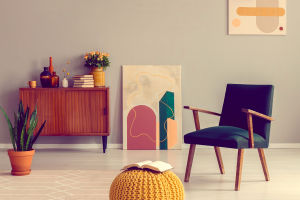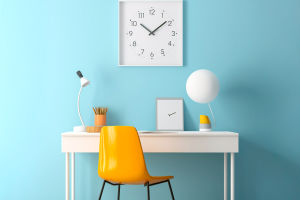Have you ever looked at your outfit and felt something was missing, but couldn't quite figure out what? Maybe your top, bottom, and shoes are all matching, but the look still feels flat.
One secret to making any outfit more dynamic is mixing textures. It's the difference between an outfit that feels "meh" and one that has real depth and personality.
Textures add a whole new layer to your style, quite literally. They create contrast, emphasize certain elements, and make your outfit stand out. Here's how you can start combining different materials to create unique and stylish looks.
1. Understanding the Power of Texture
First, let's talk about why texture matters. Just like colors, textures influence how an outfit feels—both visually and physically. Think of a soft wool sweater paired with sleek leather pants. The wool brings warmth and comfort, while the leather adds edge and structure. Together, they create an interesting contrast that draws the eye.
When you combine textures, you add visual weight to certain parts of your outfit. This makes them feel more dynamic and balanced. Textures can also change the mood of your look. Velvet might feel luxe and sophisticated, while denim feels laid-back and casual. Combining textures is all about balancing these moods and making your look feel whole.
2. Start Simple: The Power of Two
If you're new to texture mixing, it's best to start with just two contrasting materials. This keeps things simple and allows you to get a feel for how different textures work together.
A good example is pairing a soft, flowy blouse with a more structured fabric like denim or leather. The softness of the blouse contrasts with the toughness of the other material, creating a balanced look. Or, mix something fuzzy with something sleek—like a chunky knit sweater with slim, shiny leggings.
Here are some simple texture combinations to try:
• Cotton and leather: A cotton shirt with a leather jacket creates a timeless, versatile look.
• Silk and denim: A silky blouse with jeans has that casual-meets-elegant vibe.
• Wool and velvet: These two materials feel luxe together but in different ways—wool is cozy, while velvet is rich.
These combinations give your outfit a distinct texture profile without overwhelming the senses.
3. Layering Textures for More Depth
Once you're comfortable mixing two textures, it's time to experiment with layering multiple materials. Layering textures creates even more interest and complexity in your outfit.
Let's say you want to wear a trench coat over a knitted sweater. You could add a silk scarf for a third texture. The wool of the sweater, the crispness of the coat, and the smoothness of the silk create a balanced, stylish look. By layering different textures, you can mix bold pieces (like leather) with more delicate ones (like chiffon) for an outfit that feels effortlessly chic.
Here are some layering ideas:
• Denim jacket, cotton shirt, leather boots: A perfect mix of laid-back and edgy.
• Tweed blazer, satin blouse, wool pants: Classic, but with the richness of textures to keep things interesting.
• Cashmere sweater, velvet skirt, suede shoes: Soft, luxurious textures paired together for a refined look.
When layering textures, make sure to mix light and heavy materials. This keeps the outfit from feeling too "busy" and helps the individual textures stand out.
4. Playing with Pattern and Texture Together
One of the trickiest parts of combining textures is pairing them with patterns. Patterns can add a visual element, while textures add physical depth. When you mix both, it can feel overwhelming if not done carefully.
The key is to balance your textures with your patterns. If you're wearing a patterned shirt, go for solid colors in your other pieces, but make sure they have different textures. If you're sporting a plaid scarf, balance it out with a smooth, solid sweater.
Here are a few ideas to get you started:
• Stripes and leather: A striped t-shirt with a leather jacket is a cool, street-style vibe.
• Floral prints and velvet: Floral patterns are often light and flowy, while velvet has that deep richness. Pairing them adds contrast without looking too busy.
• Plaid and wool: A plaid scarf with a wool sweater creates an interesting contrast of textures while keeping the look polished.
When mixing patterns and textures, focus on making sure one element doesn't overpower the other. Let the pattern play against the texture, and the overall effect will be striking.
5. Contrast Textures with Color
Another trick for combining textures is playing with color contrasts. If you have one bold texture, such as a thick knitted sweater, balance it out with something smoother and softer in a contrasting color. This highlights both textures and creates a more interesting, attention-grabbing look.
You can also use neutrals as a base to let textures speak for themselves. For example, a black leather skirt paired with a cream wool sweater highlights the contrast between the two materials, allowing both to stand out without competing for attention.
Here's how to combine contrasting textures with color:
• Metallics and pastels: Pair a shiny metallic skirt with a soft, pastel-colored blouse. The contrast between the materials will make each piece pop.
• Matte and glossy: A matte sweater with a glossy patent leather bag is simple yet striking.
Remember that color also impacts how textures feel. Lighter shades tend to feel airy and fresh, while darker tones bring weight and sophistication. Use this to your advantage when creating your outfits.
6. Experiment with Unexpected Combinations
Sometimes the most interesting looks come from experimenting with combinations that are a little outside the box. Don't be afraid to mix things up with unusual material pairings.
Try mixing textures like:
• Sequins and denim: A sequined top with denim jeans or a jacket makes for a fun, edgy contrast.
• Leather and silk: A silk blouse with a leather skirt creates a contrast between feminine and edgy.
• Knits and metallics: A knitted sweater paired with metallic shoes or accessories brings an unexpected cool factor to your look.
The key is to try different combinations and see what feels right for you. Fashion is all about self-expression, and the more you experiment with textures, the more you'll discover what works.
Combining textures is all about creating balance, contrast, and depth in your outfits. It's a simple way to elevate your style without needing to overthink it. So, next time you're getting dressed, try mixing a few different materials. You might just discover a new favorite combo that adds an exciting twist to your everyday looks.


